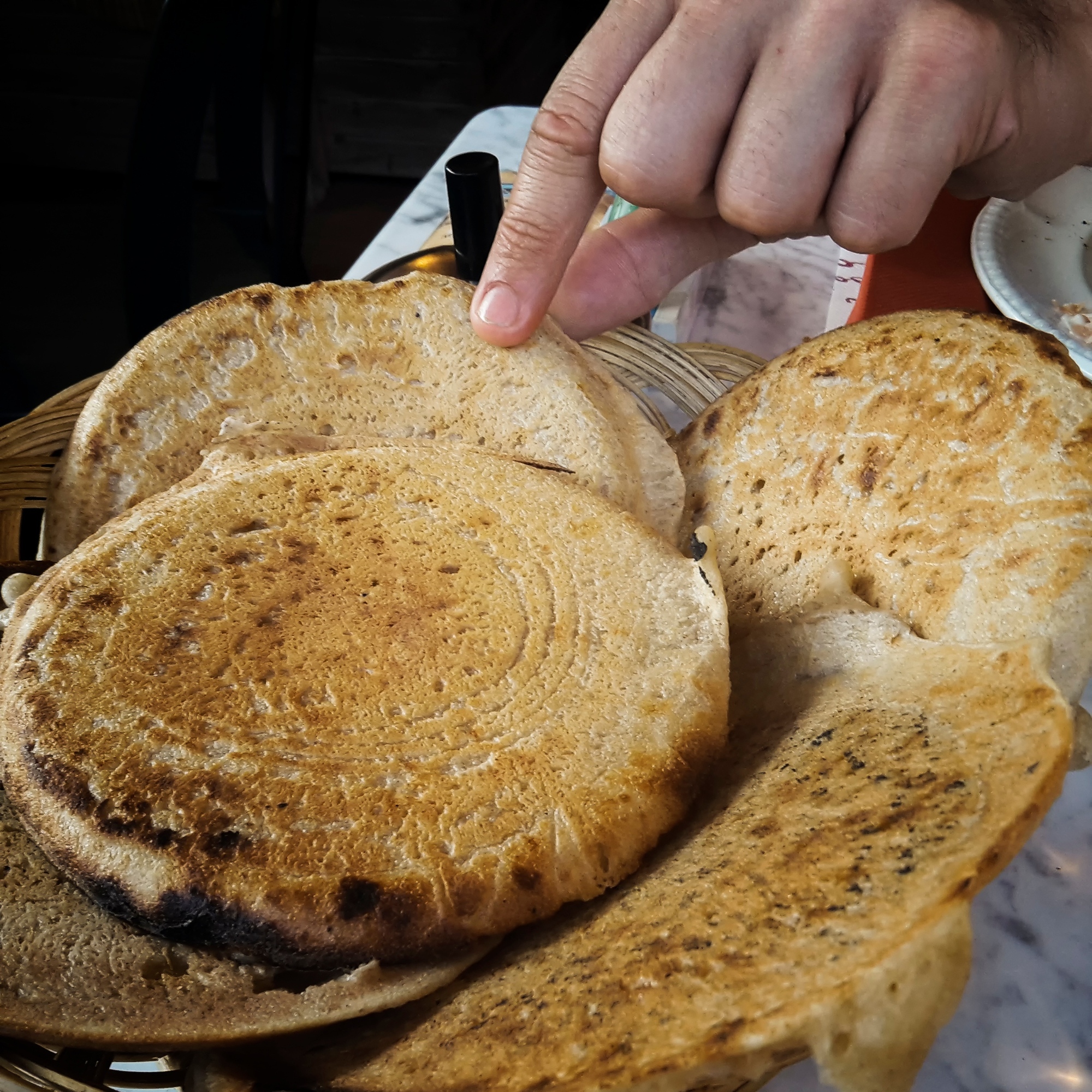Panigacci from Podenzana


An ancient dish, typical of Lunigiana
The Panigaccio from Podenzana is a kind of unleavened bread, typical of Lunigiana, which is baked in a special earthenware bowl, called testo, red-hot over a bonfire or in a wood-burning oven.
A very ancient food, simple, identifying and linked to its territory.
The term panigaccio may derive from panìco or panìgo (Setaria Italica), a poor cereal cultivated already in ancient times in the Magra valley, which together with chestnut flour constituted for centuries one of the main sources of nourishment for local communities.
It is precisely the recovery and use of ancient grains that is one of the most important and valuable activities related to this typical product, which is preserved and promoted by Associazione Panigaccio Podenzana, the community and local restaurateurs.
Today the Panigaccio of Lunigiana is a widespread and appreciated food well beyond the borders of Podenzana, but its origin and authenticity are still closely linked to these places and identity.
Characteristics
Panigaccio has a round shape, diameter of about 15 cm and golden white color.
It has a fragrant, bread-like smell.
Wheat flour is mixed with salt and water until a thick dough is obtained. It is baked in a few minutes by stacking the testi on top of each other, which are red-hot over an open wood fire and filled with batter.
Panigaccio has a round shape, diameter of about 15 cm and golden white color.
It has a fragrant, bread-like smell.
Wheat flour is mixed with salt and water until a thick dough is obtained. It is baked in a few minutes by stacking the testi on top of each other, which are red-hot over an open wood fire and filled with batter.
Food and wine
The most traditional way of eating panigacci is to accompany them while still warm with cold cuts and cheeses, but it is also possible to eat them as a first course, blanched in boiling water with pesto, meat sauce or mushroom sauce. The sweet version with hazelnut cream is now popular also in more traditional establishments.
The most traditional way of eating panigacci is to accompany them while still warm with cold cuts and cheeses, but it is also possible to eat them as a first course, blanched in boiling water with pesto, meat sauce or mushroom sauce. The sweet version with hazelnut cream is now popular also in more traditional establishments.



